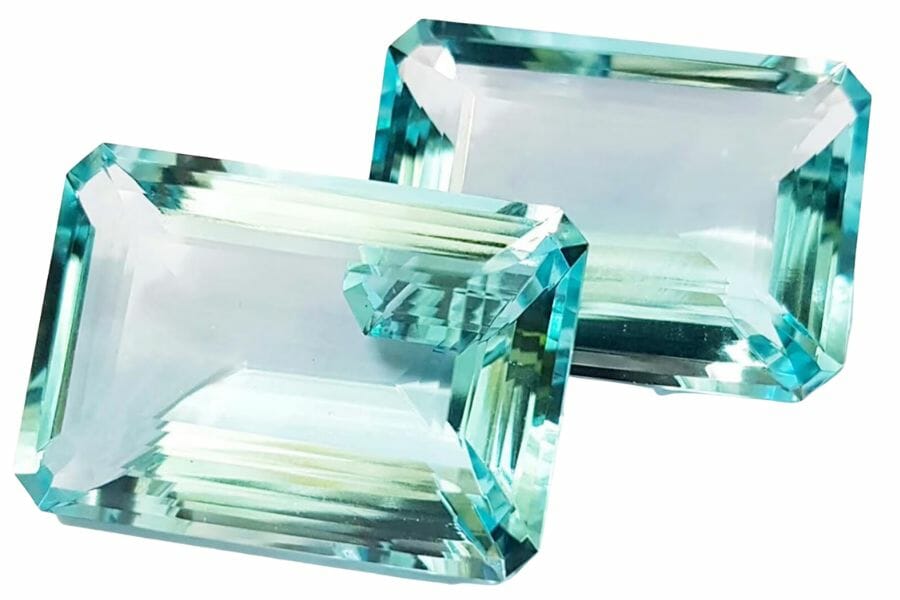Being able to differentiate turquoise vs aquamarine is something that all gem enthusiasts need to be able to do. Both of these gemstones capture the beauty of the sea and sky, sparking our fascination and love for precious stones.
But aquamarine and turquoise are as distinct as they are captivating. We’ll dive deep into the ocean-like hues of aquamarine, then wander through the desert landscapes where turquoise makes its home.
From their distinct colors to their crystal structures, we’ll uncover the characteristics that make these gemstones special.
So, buckle up for an exciting journey into the captivating world of aquamarine and turquoise. Whether you’re a budding gemologist or just curious about these two beautiful gemstones, this article will provide you with a treasure trove of information.
Aquamarine Vs Turquoise – The Major Differences
Now, let’s dive into the deep sea of differences between aquamarine and turquoise. From their unique colors and crystal structures to their different origins, these gemstones are truly distinct.
Ready to uncover their unique characteristics? Let’s start this fascinating journey!
Appearance – Aquamarine is transparent
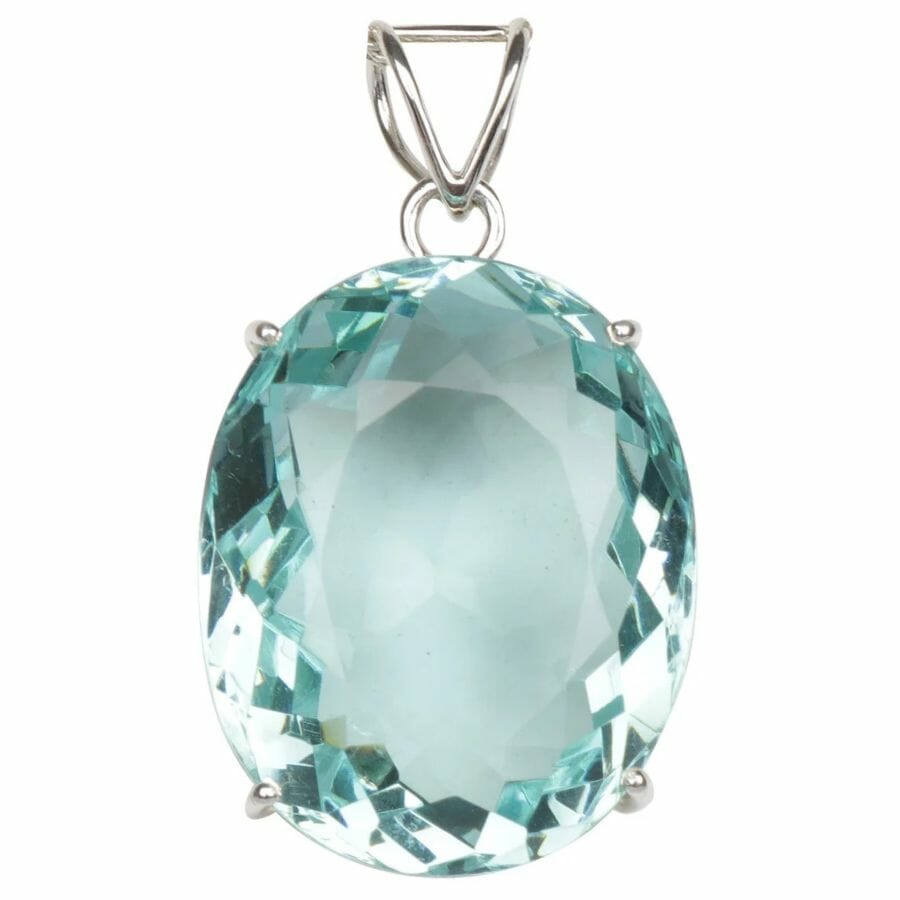
Transparency plays a big part in the appearance of aquamarine and turquoise. When something is transparent, it means that light can pass through it. You’ll also be able to see through it.
Meanwhile, when something is opaque, it means that it blocks the light.
Aquamarine is typically transparent to translucent, which means it allows some or a lot of light to pass through. When you look at an aquamarine gem, you might be able to see right through it, especially if it’s a high-quality gem.
Turquoise is usually opaque, which means no light can pass through it. This is true no matter how thin a piece of turquoise is. Of course, this doesn’t make it any less beautiful.
In fact, the opaque quality of turquoise gives it a rich, vibrant color that can’t be matched by transparent gems.
Some pieces of turquoise also have a web-like matrix. A matrix is a network of narrow veins, often brown or black, that runs through the stone. It’s like a road map or a web, creating patterns that are unique to each piece of turquoise.
Other pieces, however, don’t have this matrix and can look like a clear blue sky.
Colors – Turquoise has a wider range of hues
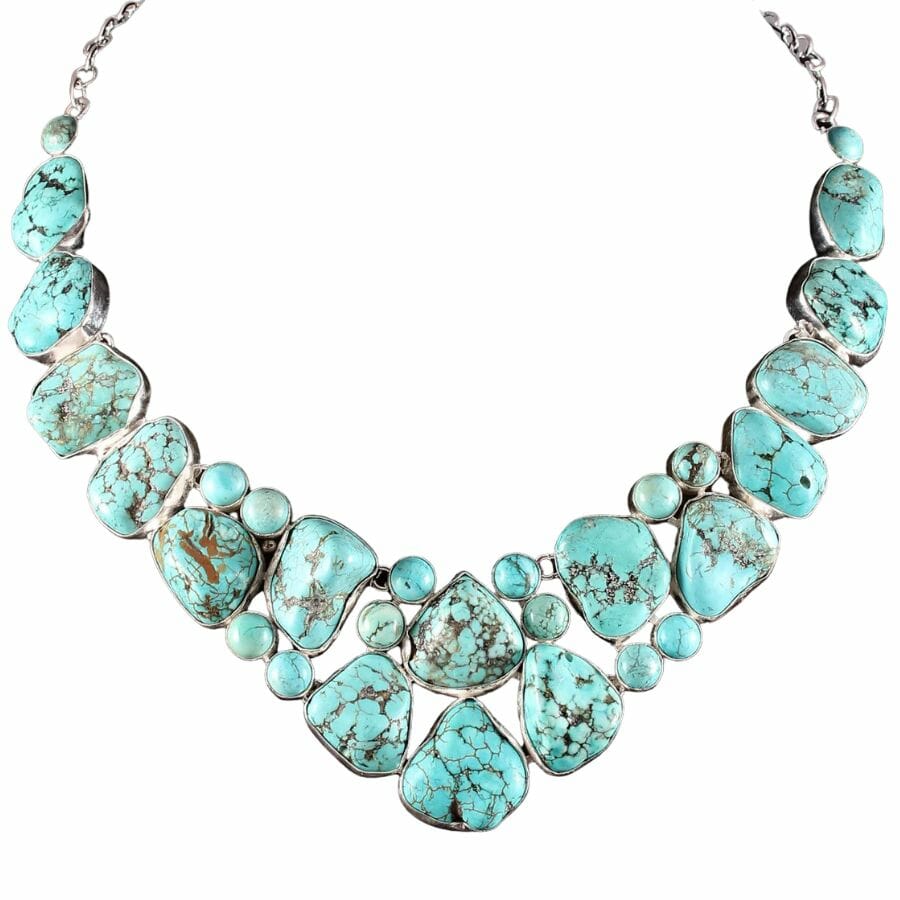
Aquamarine and turquoise can exhibit colors from light to dark blue and even some green.
The name aquamarine is derived from two Latin words: “aqua,” meaning water; and “marina,” meaning sea. True to its name, aquamarine gems range from light blue to deep sea blue.
Some aquamarines can also have a greenish tint, making them look even more like seawater.
On the other hand, turquoise can can go from a pale, sky blue to a rich, earthy greenish-blue. Some specimens even appear apple green, though this color tends to be rare in turquoise.
The rich, intense sky-blue color is usually the most appreciated.
While aquamarine can appear greenish, it won’t be as green as turquoise stones can appear. It will still be predominantly blue.
We also have a guide to blue rocks and minerals that might interest you!
Hardness – Aquamarine has a relatively higher hardness
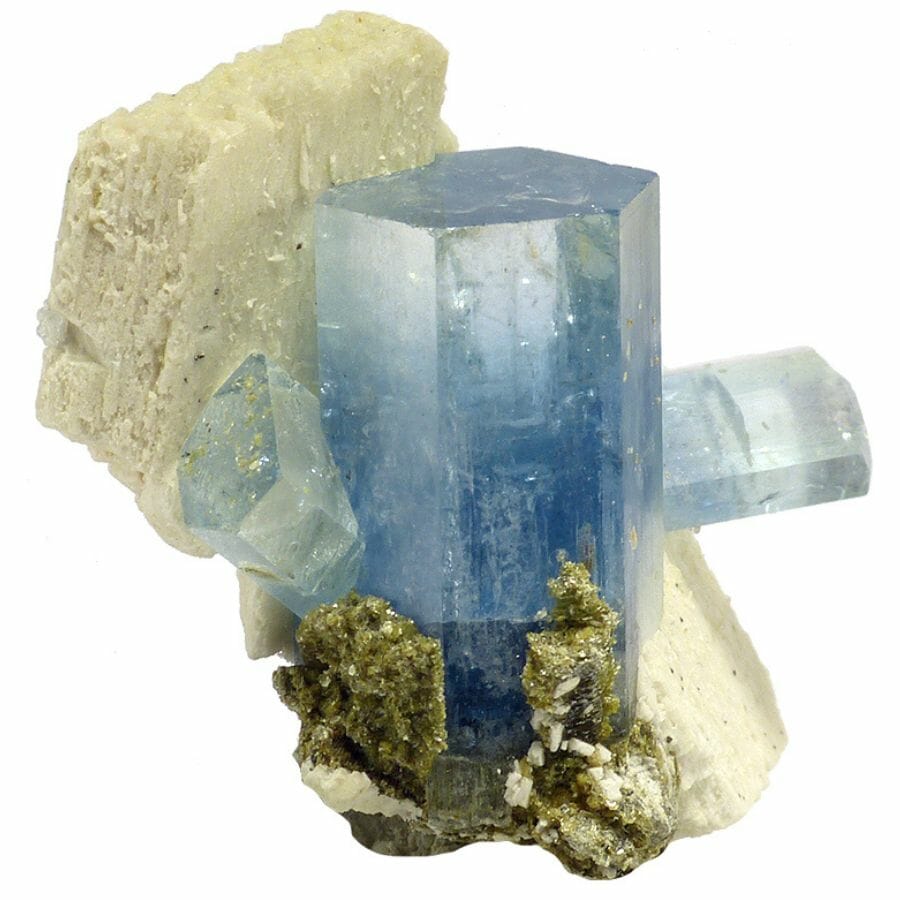
If you’ve ever tried to scratch a gemstone or watched one get cut and polished, you’ve seen hardness at work. Hardness in geology refers to how well a mineral can resist scratching.
It’s like a rock’s superpower, with some rocks resisting scratches better than others.
We measure an object’s hardness using the Mohs Hardness Scale. It measures the hardness of minerals from 1 (softest) to 10 (hardest),
Take aquamarine, for example. On the Mohs scale, a scale used to measure hardness, aquamarine ranks between 7.5 and 8. That’s pretty high up on the scale
This makes aquamarine a durable gemstone that’s resistant to scratches, which is great if you’re wearing it in jewelry.
On the other hand, you have turquoise. With a hardness rating of 5 to 6 on the Mohs scale, turquoise is significantly softer than aquamarine.
It’s more likely to get scratched by everyday objects. For instance, a steel object could scratch a piece of turquoise.
That’s why turquoise needs to be handled with care. However, its softness also means that it can be polished to a high shine, making it a favorite for ornamental uses.
Luster – Turquoise has a waxy shine
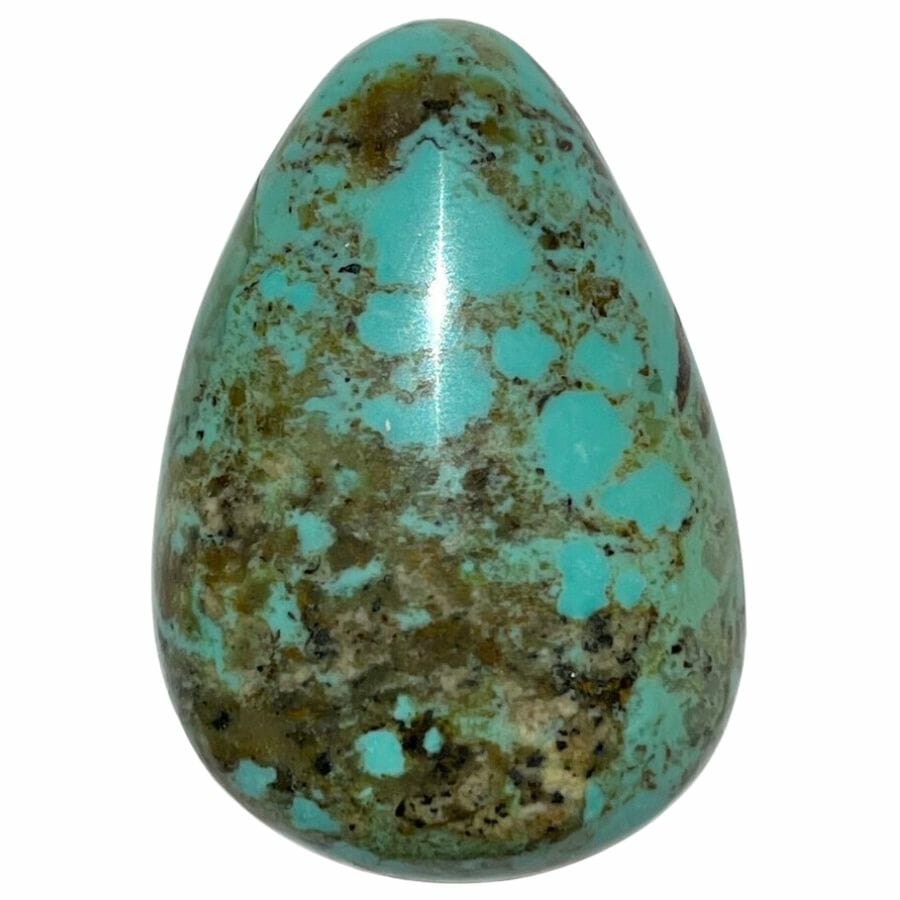
When you hold a gemstone up to the light, you’ll notice the way it shines. This glow is called the luster of a stone. Aquamarine and turquoise both shine when polished, but you’ll notice subtle differences in how this shine looks.
Aquamarine has what’s known as a vitreous luster. That’s a fancy way of saying it shines like glass.
If you’ve ever seen sunlight hit a clean window, you’ll remember the bright, sharp sparkles that danced across the surface. That’s what aquamarine looks like when light hits it.
Turquoise, however, has a different luster. It has a less intense, softer shine than aquamarine’s glass-like gleam. This kind of luster is described as waxy to subvitreous.
Imagine how a candle looks when light hits its wax surface. It’s still shiny, but the glow is more subtle, gentle, and diffused. This is how turquoise can look.
Streak – Aquamarine has a colorless streak
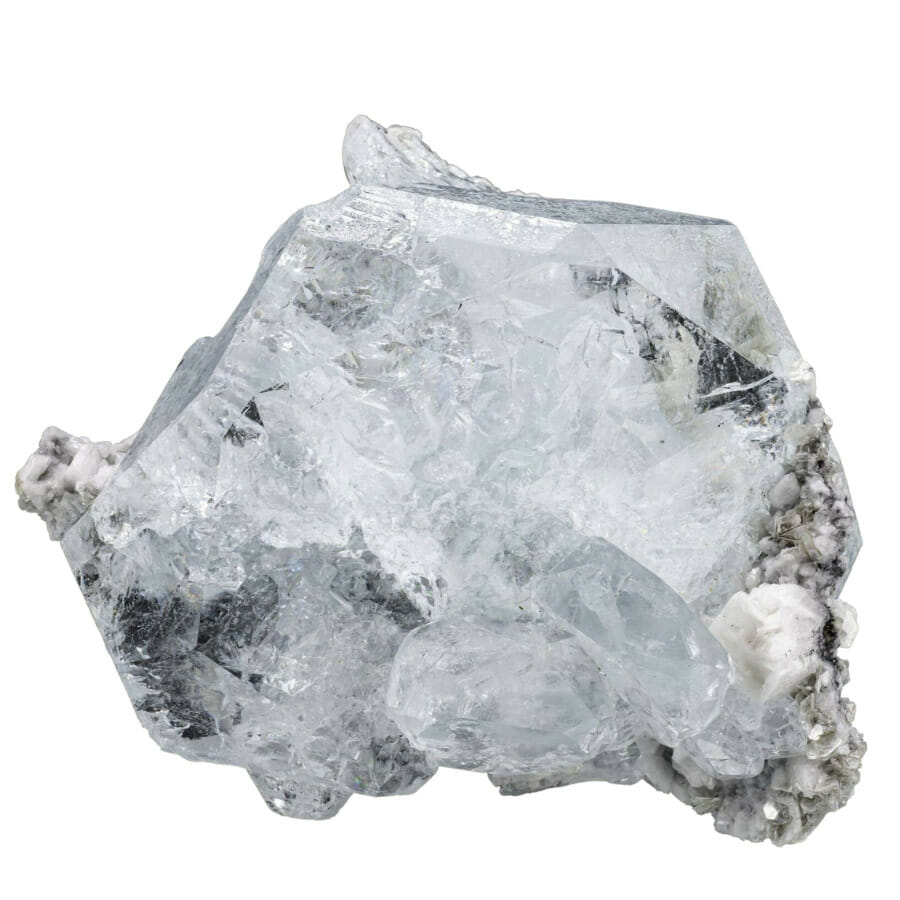
Streak tests are a fun way to learn more about different minerals. To do this test, you take a mineral and scratch it on a piece of unglazed porcelain called a streak plate. The color of the streak left behind can give you more insights about the mineral.
If you did a streak test with aquamarine, you wouldn’t see any color on the plate.
A colorless streak might make you think the test didn’t work, but it’s actually a valuable piece of information. It shows that aquamarine is harder than the streak plate, which has a hardness of about 6.5 on the Mohs scale.
Now, let’s consider turquoise. It’s a softer mineral than aquamarine. When you scratch turquoise on a streak plate, it leaves a bluish-white to greenish-white streak.
The exact color can vary depending on the specific piece of turquoise, but it’s always some shade of bluish- or greenish-white.
So, even though both gemstones are different shades of blue, their streaks are very different. It’s just another way that aquamarine and turquoise show their unique characteristics. Even in powder form, these two gems are not the same!
Cleavage – Turquoise cleaves perfectly
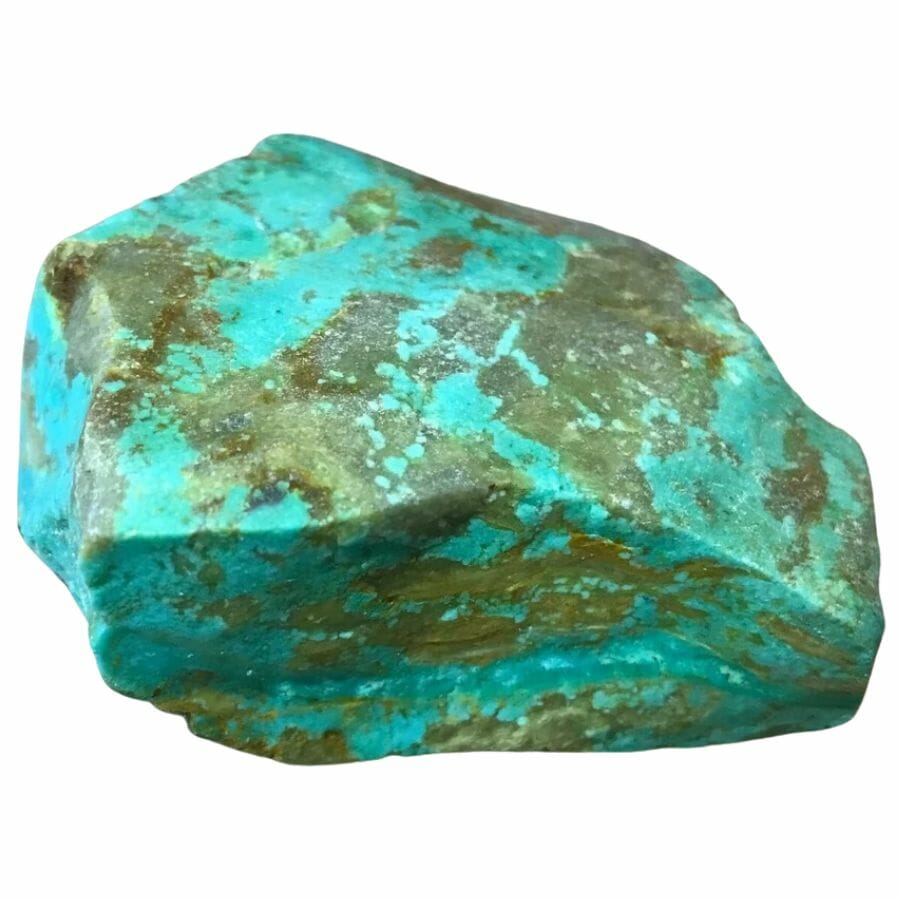
Cleavage in minerals refers to how they break along certain lines or planes when they’re hit or pressured. This property helps identify and distinguish different minerals.
Let’s first look at aquamarine. Aquamarine has what mineralogists call imperfect cleavage. This means it’s likely to break into uneven, irregular pieces rather than neat, flat planes.
Think of it like breaking a piece of hard candy. It shatters into many different shapes and sizes, not along nice, even lines.
This makes aquamarine tough and more resistant to breaking. Because of this, it’s great for jewelry that gets bumped or knocked around.
Now, let’s consider turquoise. This gemstone exhibits good cleavage. This means it tends to split along flat surfaces.
Imagine breaking a chocolate bar along the lines where it’s designed to break. That’s similar to how turquoise breaks.
Interestingly, you won’t actually easily notice that turquoise cleaves perfectly. This is because most pieces of turquoise have small grains, so its cleavage isn’t all that noticeable.
However, this also means that turquoise is more susceptible to breaking if it’s not handled carefully.
Crystal structure – Aquamarine grows in hexagonal cylinders or tabular crystals
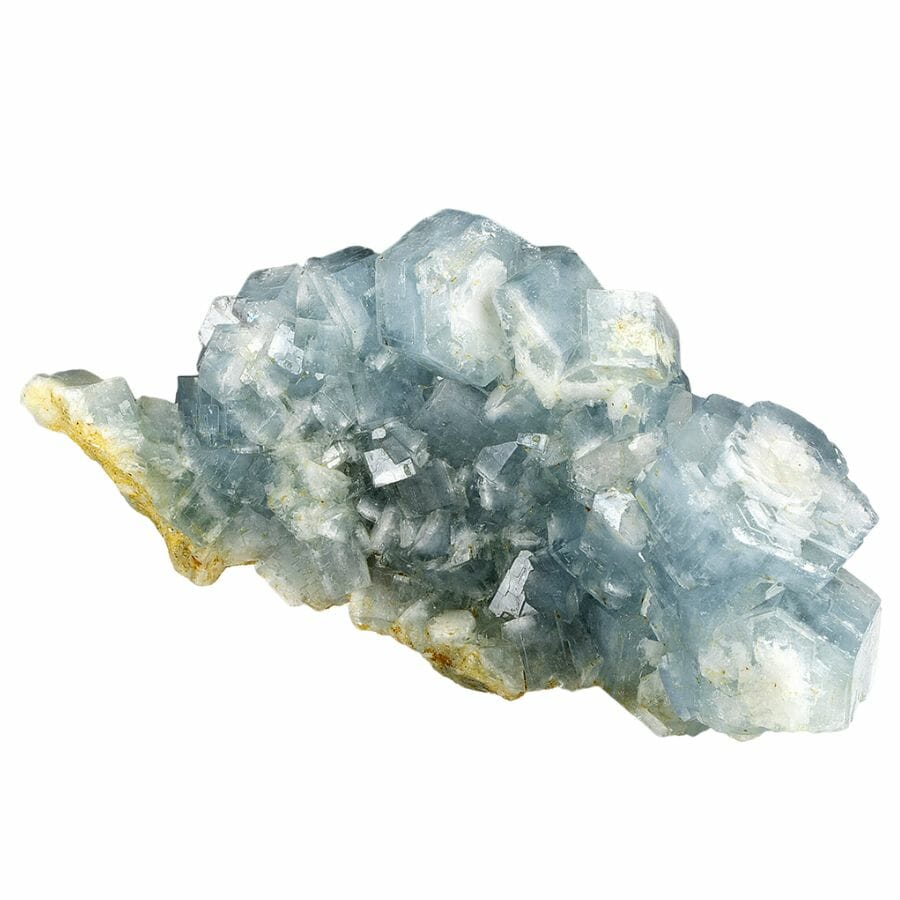
Each mineral has a unique crystal structure, which is like its blueprint or building plan. This structure determines the shape of the mineral’s crystals and contributes to its unique properties.
Let’s start with aquamarine. This gemstone has a hexagonal crystal structure, which means its atoms arrange themselves in a pattern with six sides.
When aquamarine forms, its crystals grow into long, hexagonal columns or thick, flat shapes called tabular crystals. The crystal structure of aquamarine is pretty orderly and symmetrical, a bit like building blocks neatly stacked together.
So, if you see a gemstone that’s long and six-sided, it could be aquamarine.
Now, let’s talk about turquoise. Its crystal structure is triclinic.
In a triclinic structure, the atoms arrange themselves in a way where all three axes of the crystal have different lengths. Additionally, none of the axes are at right angles to each other.
The arrangement of turquoise’s atoms is more irregular than aquamarine’s hexagonal structure. This means that turquoise crystals form in non-uniform shapes. It’s as if the atoms are playing a game of Tetris, fitting together in a more freeform way.
Formation – Turquoise forms like nuggets in the earth
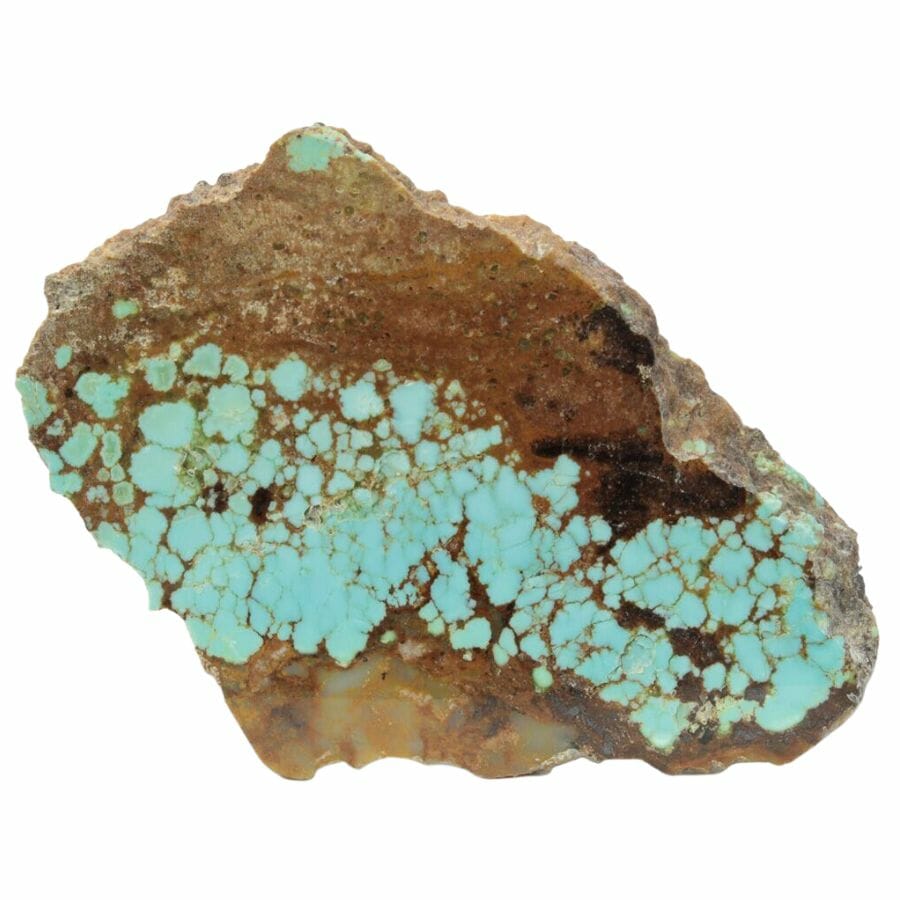
The way a gemstone forms in the earth can tell you a lot about what it is. Both aquamarine and turquoise form in different ways.
Aquamarine forms in pegmatites, which are areas of intense heat and pressure within the earth.
Turquoise, however, forms differently. It is created through a process called weathering and oxidation. This means it’s formed when other rocks break down due to exposure to air and water.
Turquoise doesn’t form in large crystals like aquamarine. Instead, it appears as crusts, nodules (which are small lumps), or as veins running through host rocks.
So, when trying to identify these gemstones, consider their shape. The long, hexagonal crystals probably belong to aquamarine. The crusts, nodules, or veiny structures are likely turquoise.
Knowing how these gemstones form can be a key clue in telling them apart!
Fluorescence – Aquamarine can exhibit weak fluorescence
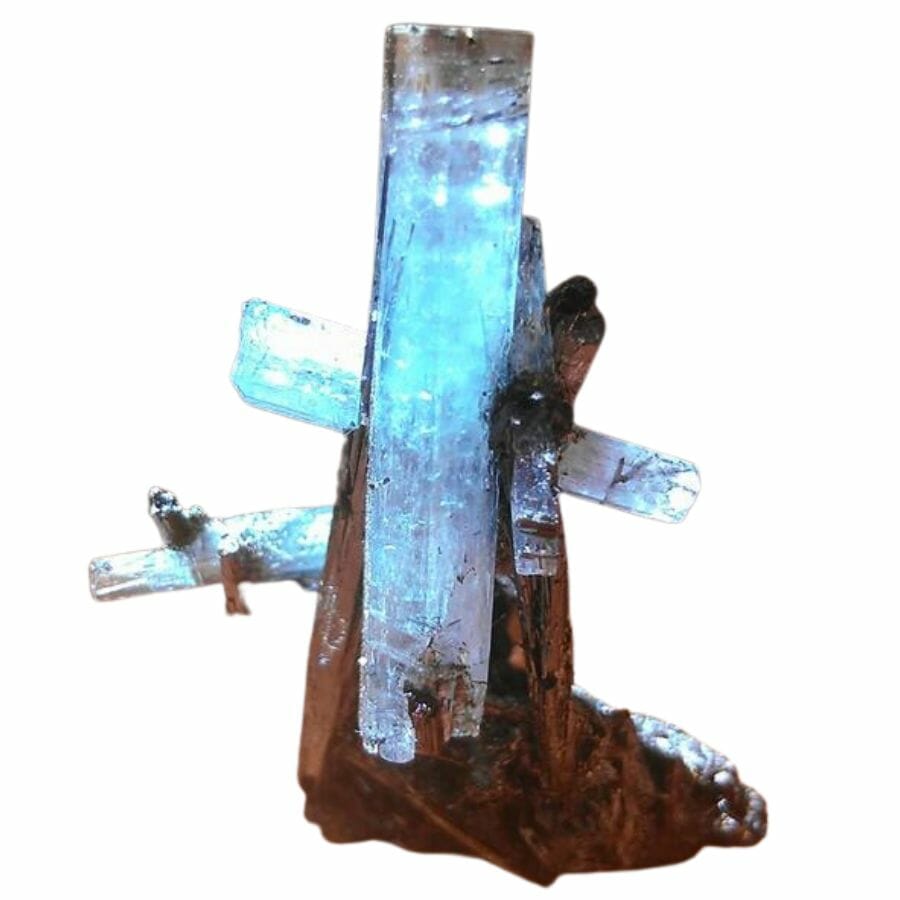
Fluorescence is a super cool property that some minerals have, causing them to glow under ultraviolet (UV) light. It’s like they have a secret light show hidden within them, and it can be a neat way to tell different gemstones apart.
Aquamarine, for instance, can fluoresce under UV light. What does that mean? Well, if you were to shine a UV light on an aquamarine, it could glow a weak pale blue color.
It’s not always a strong glow, but it’s there.
Now, let’s talk about turquoise. Despite its vibrant color, turquoise does not exhibit fluorescence. That means if you shine a UV light on it, it won’t glow or change its appearance.
Chemical composition – Turquoise contains water in its composition
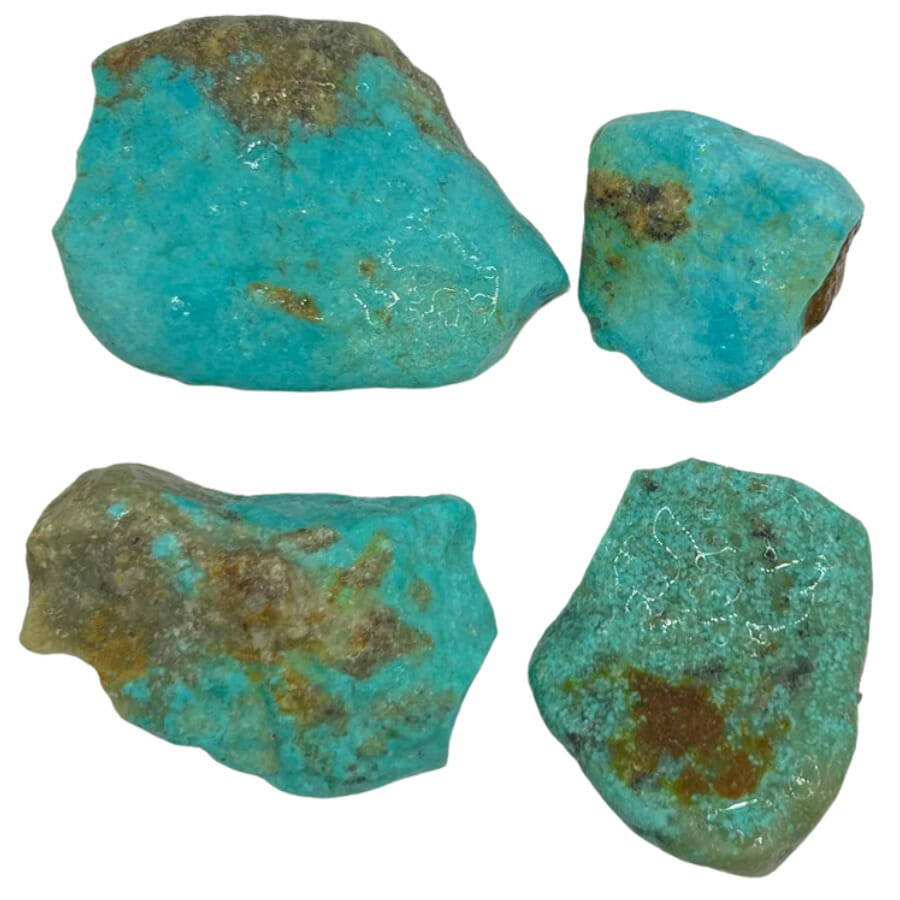
Chemical composition sounds like a big, fancy term, but it’s really just the recipe that makes up a mineral. Like a cake has ingredients like flour and sugar, minerals have ingredients too. These ingredients are typically elements from the periodic table.
Aquamarine’s recipe includes three key ingredients: beryllium, aluminum, and silica. It also has a little bit of iron thrown in to give it its blue color. These elements combine to form a mineral called beryl.
So, you could say that aquamarine is a type of beryl, just like a chocolate cake is a type of cake.
The iron in its recipe is what sets aquamarine apart, making it blue instead of colorless like pure beryl.
Turquoise, on the other hand, has a completely different recipe. Its main ingredients are copper, aluminum, and phosphorus. These ingredients are combined with some water and other elements.
This mix gives turquoise its unique blue-green color and its softer, more porous texture.
Unlike aquamarine, there’s no iron in turquoise’s recipe. Instead, it’s the copper that gives turquoise its beautiful color.
Price – Aquamarine generally fetches a higher price
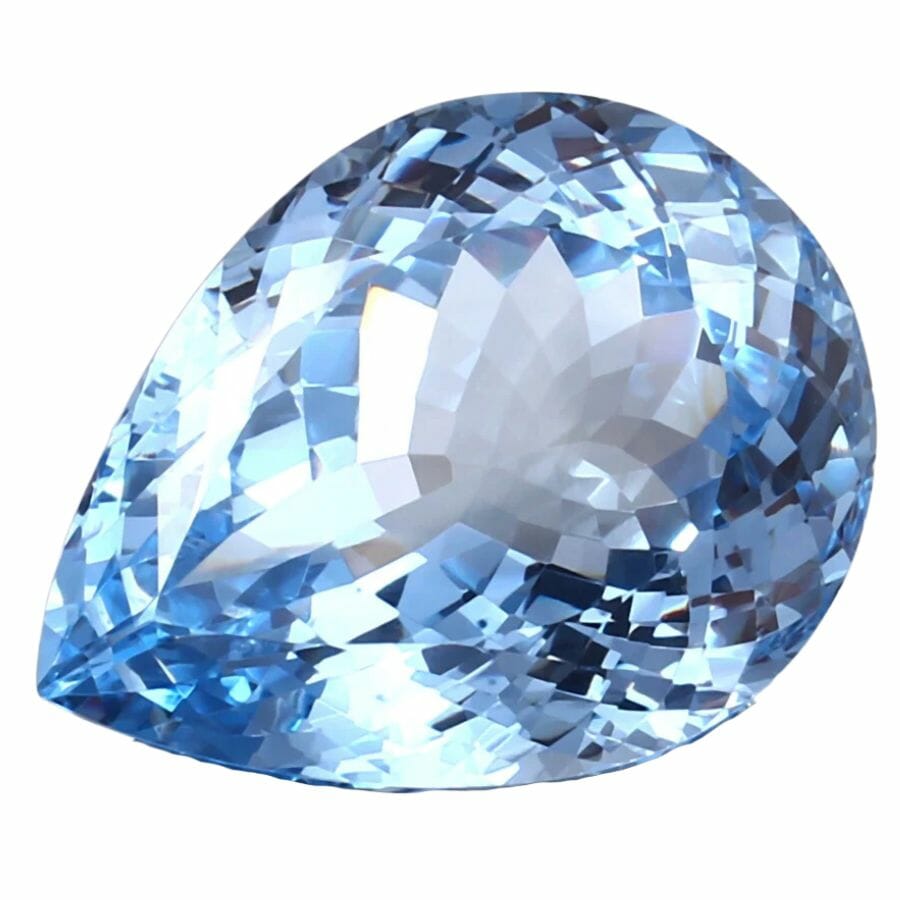
Gemstones like aquamarine and turquoise come with different price tags. The price of aquamarine and turquoise depends on many things, like its color, clarity, size, and how easy it is to find.
Aquamarine is often more expensive than turquoise. The most expensive aquamarines are those that are a nice blue color, clear, and large in size. However, lighter blue or greenish-blue stones can still be quite pricey.
Turquoise, on the other hand, is usually less expensive than aquamarine. This is mostly because turquoise is easier to find and mine.
However, high-quality turquoise can still be quite valuable. If it has an intense blue color with little or no greenish tones and a lack of veins or markings, it can fetch a high price.
Location – Turquoise is found in desert-like areas around the world
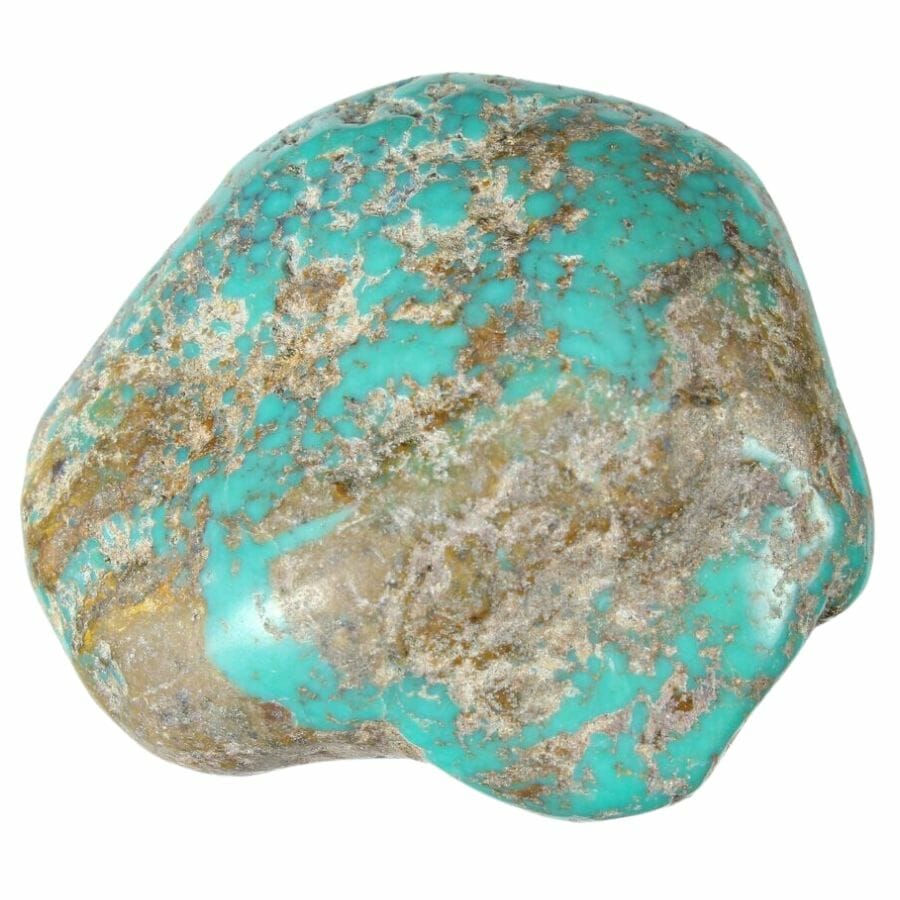
Just like people, gemstones come from all over the world. Each one has its own “hometown” or place where it’s usually found. For aquamarine and turquoise, their hometowns are as different as they are.
Aquamarine is found in several parts of the world. Brazil is one of the biggest sources of aquamarine, with stunning blue-green stones being mined there.
African countries like Madagascar and Mozambique also have significant aquamarine deposits.
You can also find it in Pakistan and Afghanistan, as well as India and Sri Lanka. It’s a bit like a worldwide explorer, turning up in various countries and continents.
Turquoise, meanwhile, is famously associated with states like Arizona, New Mexico, and Nevada. These areas have dry, arid climates that are perfect for turquoise formation. You can find turquoise in a gem mine near you starting with these states.
Turquoise is also found in other places with similar climates, like Iran and the Sinai Peninsula in Egypt. You’ll also find it in places like Mexico, China, and Chile.It tends to stick to these dry, desert-like areas.
So while both these gemstones are truly international treasures, they each have their preferred spots on the globe.
Turquoise Vs Aquamarine – The Similarities
While aquamarine and turquoise have many differences, they also share similarities. Both display beautiful blue hues, are used in jewelry, and are admired for their beauty worldwide.
Density – Both stones have similar densities
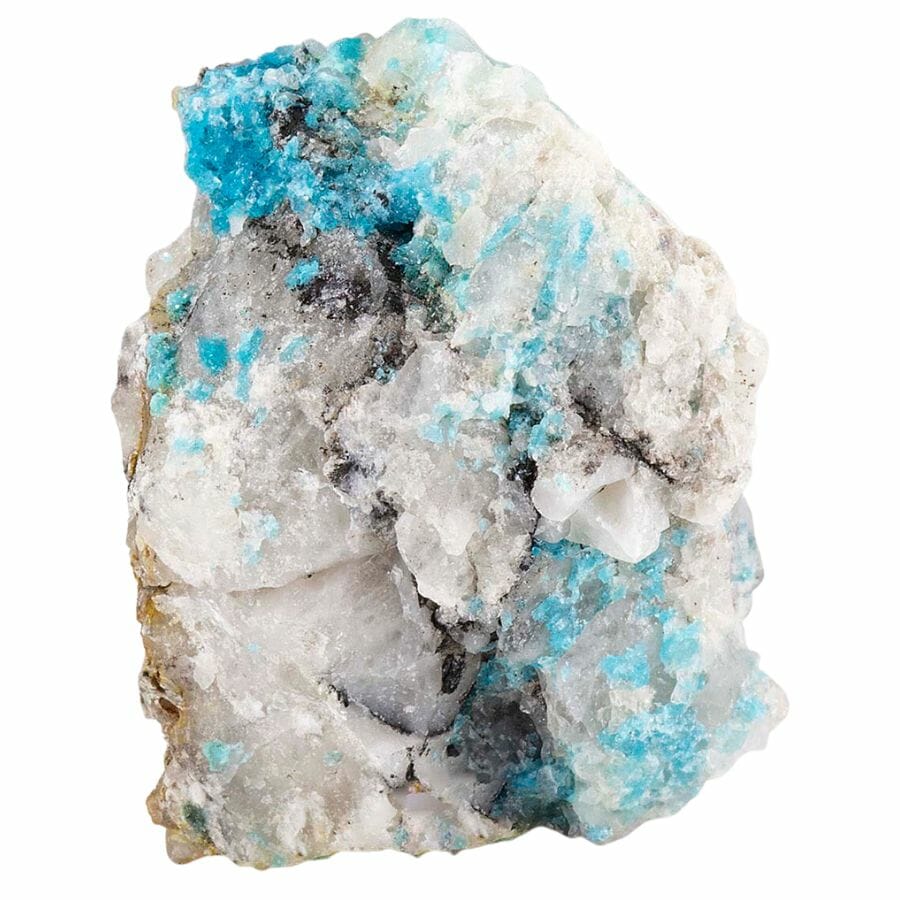
Density is a bit like a secret identity for rocks and minerals. Even though two minerals may look similar or be the same size, they might have different densities. This refers to how much mass they have in a given volume.
It’s a bit like comparing a marshmallow to a same-sized piece of chocolate. They’re the same size, but the chocolate is denser and weighs more.
Aquamarine and turquoise have relatively similar densities. Aquamarine has a density between 2.6 and 2.8 grams per cubic centimeter. That’s about the same as a sugar cube.
Turquoise, on the other hand, has a density between 2.5 and 2.9 grams per cubic centimeter. So, it’s roughly in the same ballpark as aquamarine.
This density is a little more variable because turquoise often contains impurities and has a more porous structure.
Magnetism – Neither stone is magnetic
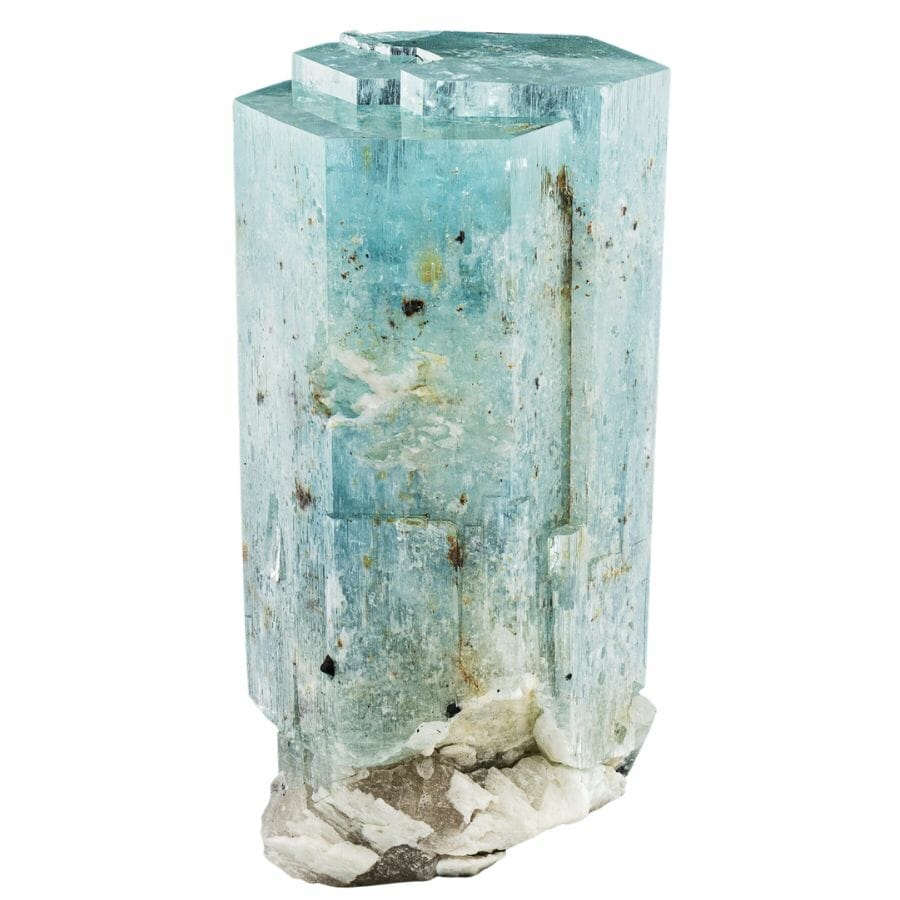
Magnetism allows objects to attract or repel other materials.
Think about when you put two magnets together: they might stick together or push apart. This is because of magnetism.
When we’re talking about aquamarine and turquoise, however, neither of them has this particular characteristic. Both aquamarine and turquoise are non-magnetic, which means they don’t attract or repel other materials.
Conductivity – They are poor conductors
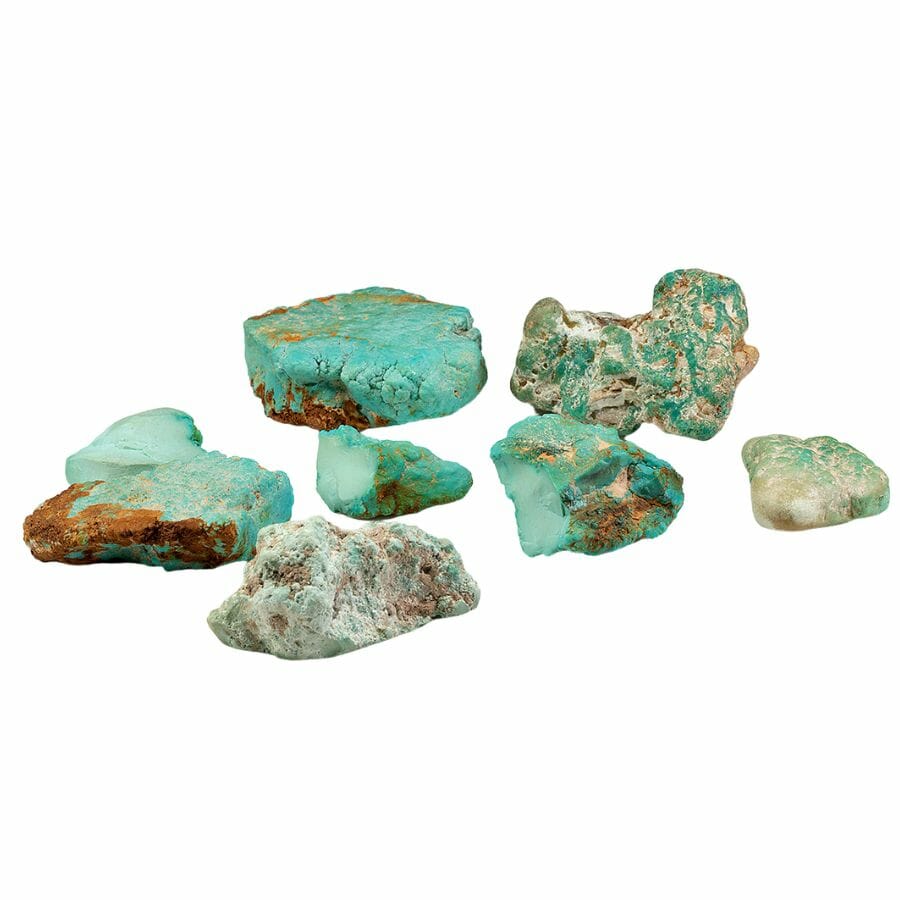
Conductivity is like a super highway for heat and electricity. Some materials are great at it, like metals. They allow heat or electricity to zoom right through them.
Other materials, like rubber or wood, aren’t so great at conducting. They slow down or even stop heat or electricity in their tracks.
Aquamarine and turquoise are more like the slow lane on the highway. Both these gemstones are poor conductors of electricity. This means they don’t let electricity pass through them easily.
So, if you tried to use a piece of aquamarine or turquoise to complete a circuit, you’d be out of luck.
The same goes for heat. These gems aren’t great at conducting heat either. If you held a cold piece of aquamarine or turquoise in your hand, it wouldn’t quickly warm up to your body temperature.
It would take a little time because the heat from your hand wouldn’t pass into the gemstone very quickly.
So, while aquamarine and turquoise might be beautiful and fascinating in many ways, they’re not winning any races in the conductivity department.
They’re more like the scenic route on the highway, not the fast lane, when it comes to letting heat and electricity pass through.
The Easiest Ways to Tell Aquamarine and Turquoise Apart
Aquamarine and turquoise have that beautiful blue color that might remind you of a bright, sunny day at the beach. But if you look closer, you’ll find that it can be easy to tell them apart.
If you’re in one of our favorite places to go rockhounding having a quick and easy way to tell them apart in the field is very helpful.
Test for transparency
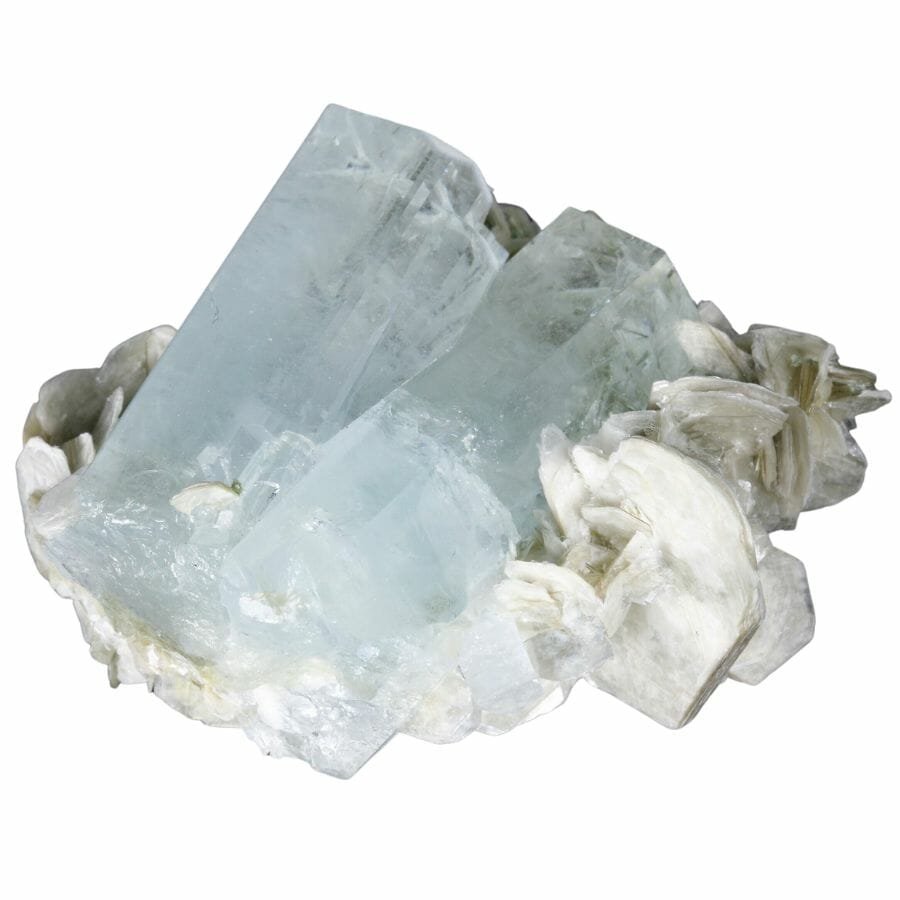
When you’re trying to distinguish turquoise vs aquamarine, one key feature to consider is how much light passes through the stone.
This quality, known as transparency, can be a big clue in distinguishing these two blue beauties.
Aquamarine is often transparent to translucent, while turquoise is opaque.
So, you can use something as simple as your phone’s flashlight when you’re trying to tell aquamarine and turquoise apart. If the light shines through, you might have an aquamarine on your hands.
If it doesn’t, it could be a piece of turquoise. This simple test is a great way to get to know these beautiful gemstones better.
Perform a scratch test
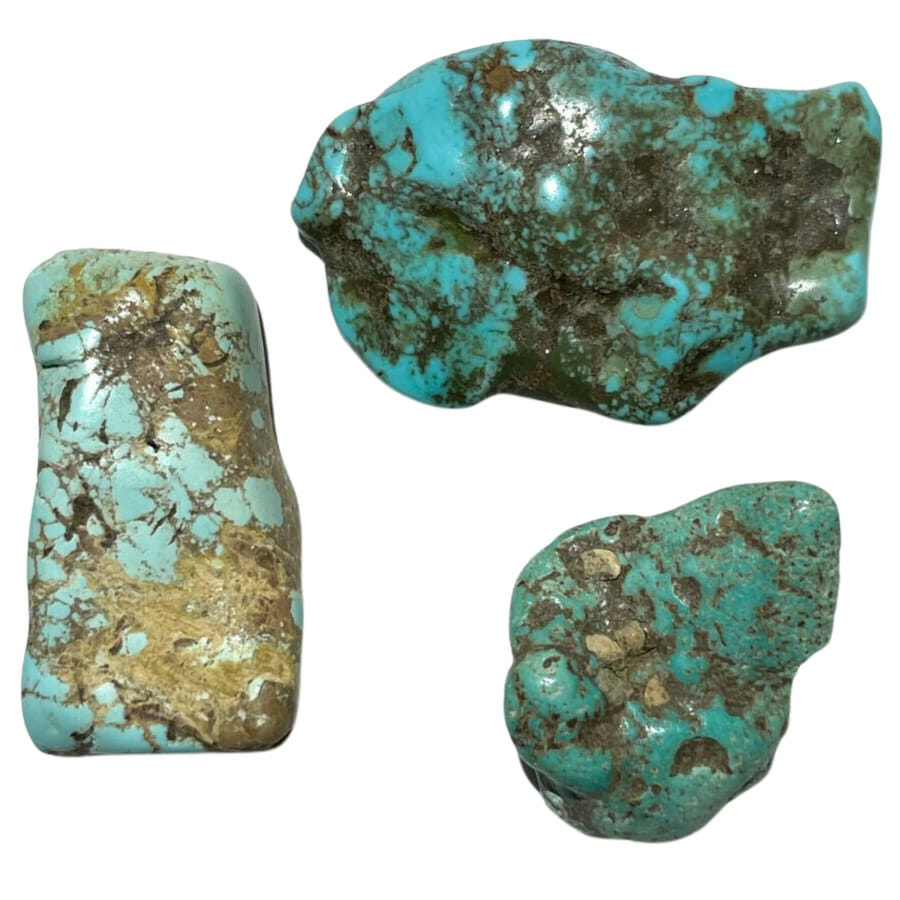
A scratch test is another handy way to distinguish aquamarine vs turquoise. You might not think a steel nail would be part of your gemstone testing kit, but it can be quite useful!
Aquamarine is a pretty tough gemstone. It’s harder than a steel nail, which ranks about 6.5 on the Mohs scale. So, if you tried to scratch an aquamarine with a steel nail, you’d find that the gemstone is unscathed.
On the other hand, turquoise is softer. If you try to scratch a piece of turquoise with a steel nail, you’ll notice a mark, showing it’s been scratched.
So, performing a scratch test with a steel nail can be a simple and effective way to tell these two gemstones apart. The nail will leave a mark on turquoise, but it won’t have an effect on aquamarine at all.

